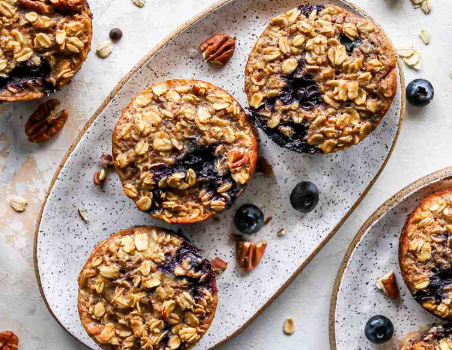
Adopting a plant-based diet can feel like a big change, but it doesn’t have to be overwhelming. Whether you want to improve your health or reduce your environmental impact, making the shift to plant-based eating can bring numerous benefits. Here’s a guide on how to transition into a plant-based diet, along with tips to help you navigate the process successfully.
What Is a Plant-Based Diet?
A plant-based diet focuses on consuming foods that primarily come from plants. This includes fruits, vegetables, whole grains, legumes, nuts, and seeds. The diet minimizes or excludes animal products like meat, dairy, and eggs, although some plant-based diets may occasionally include small amounts of animal foods depending on personal preferences.
How Is It Different from a Vegan Diet?
While all vegan diets are plant-based, not all plant-based diets are strictly vegan. A vegan diet eliminates all animal products, whereas a plant-based diet may allow for occasional animal foods but emphasizes plant-based foods as the primary source of nutrition.
Health Benefits of a Plant-Based Diet
There are several health advantages to adopting a plant-based diet, including:
- Reduced Risk of Heart Disease: Studies suggest that plant-based diets can lower the risk of heart disease by improving cardiovascular health.
- Improved Blood Sugar Control: A plant-based diet is associated with better blood sugar regulation and a lower risk of type 2 diabetes.
- Weight Management: High-fiber plant foods promote satiety, making it easier to manage weight and avoid overeating.
How to Transition into a Plant-Based Diet
- Start Slowly with Meatless Days
Begin by introducing “Meatless Mondays” or another regular meat-free day. Gradually increase the number of plant-based meals throughout the week to avoid feeling overwhelmed. A slow transition allows your digestive system to adjust to the increased fiber intake and minimizes any discomfort. Tip: Try swapping chicken stir-fry with a tofu and vegetable stir-fry with brown rice. - Prioritize Whole Plant Foods
While plant-based meat alternatives like vegan sausages or burgers are available, they are often processed and not as nutrient-dense. Focus on whole foods like legumes, whole grains, fruits, and vegetables. Tip: Incorporate beans, lentils, tofu, quinoa, and fresh produce into your meals. These foods are nutrient-rich and better for overall health. - Replace Animal Proteins with Plant Proteins
A key element of a plant-based diet is ensuring sufficient protein intake. Some plant-based proteins include tofu, tempeh, lentils, quinoa, and edamame. It’s essential to plan your meals around a variety of plant proteins to ensure you’re getting all the necessary amino acids. Tip: Aim for around 1.0–1.2g of protein per kilogram of body weight for general health, or slightly more if you’re physically active. - Balance Your Plate with Key Nutrients
A healthy plant-based meal should include a balance of protein, healthy fats, and complex carbohydrates. This combination ensures that your body gets the essential nutrients it needs for optimal function. Tip: Include sources of healthy fats (like avocados, olive oil, and nuts), complex carbs (like sweet potatoes, quinoa, and brown rice), and fiber (from vegetables and legumes). - Plan Ahead and Meal Prep
Planning your meals in advance can help you stay on track and avoid relying on processed or convenience foods. Prepare and store grains, legumes, and snacks like hummus and veggie sticks to make meal times easier. Tip: Cook larger portions and freeze meals like soups, curries, or chili for quick, nutritious options. - Read Labels Carefully
When buying packaged plant-based foods, be cautious about ingredients. Some items may be high in sugar, sodium, or unhealthy fats. Look for products with simple ingredient lists and minimal additives. Tip: Choose products with whole food ingredients and check for at least 30g of fiber per day.
Common Mistakes to Avoid on a Plant-Based Diet
- Not Consuming Enough Calories
Plant-based foods tend to be lower in calories compared to animal products. Be sure you’re eating enough volume to meet your energy needs. - Neglecting Protein Planning
While plant-based protein sources are abundant, it’s important to plan meals to ensure you’re getting a variety of proteins to meet your nutritional needs. - Relying Too Much on Processed Alternatives
Though convenient, processed meat alternatives are not always the healthiest. Focus on whole foods to get the most nutritional benefit from your plant-based diet. - Not Checking Supplement Requirements
Certain nutrients, like Vitamin B12, Vitamin D, and omega-3s, may be harder to obtain on a plant-based diet. It’s important to check if you need supplements to fill these gaps.
Key Nutrients to Pay Attention To
- Vitamin B12: Essential for DNA protection and red blood cell formation. Found in fortified foods like cereals, plant milks, and nutritional yeast.
- Iron: Important for oxygen transport and immune function. Found in legumes, dark leafy greens, nuts, seeds, and fortified foods.
- Calcium: Supports bone and muscle function. Found in leafy greens, calcium-set tofu, and fortified plant milks.
- Zinc: Plays a role in immune function and enzyme activity. Found in nuts, seeds, lentils, and whole grains.
- Omega-3s: Vital for heart, eye, and brain health. Found in walnuts, chia seeds, flaxseeds, and algae supplements.
Example of a One-Day Plant-Based Meal Plan
- Breakfast: Overnight oats with chia seeds, almond butter, and berries.
- Lunch: Quinoa salad with chickpeas, mixed greens, avocado, and olive oil dressing.
- Snack: Hummus with veggie sticks.
- Dinner: Lentil stew with brown rice and steamed broccoli.
FAQ:
Is intuitive eating helpful when transitioning to a plant-based diet?
Intuitive eating can be beneficial, but initially, it’s important to follow a structured plan to ensure you’re getting all the essential nutrients and meeting your calorie needs. Over time, as you become more familiar with plant-based foods, intuitive eating can help guide your choices.
Can I transition without therapy or professional help?
It’s possible, but consulting a dietitian or nutritionist can provide personalized support, especially if you’re concerned about meeting your nutrient needs.
What should I do after a binge on a plant-based diet?
If you’ve overdone it, don’t stress. Get back on track by focusing on balanced, whole-food meals the next day and avoid restricting yourself excessively, which can lead to another binge.
Conclusion
Transitioning to a plant-based diet can be a rewarding and health-boosting choice when done with intention and planning. Start slowly, incorporate whole plant foods, and ensure you’re meeting your nutritional needs through a balanced approach. Remember that this is a journey, and with the right strategies in place, you can make the shift successfully and enjoy all the health benefits that come with it.

















